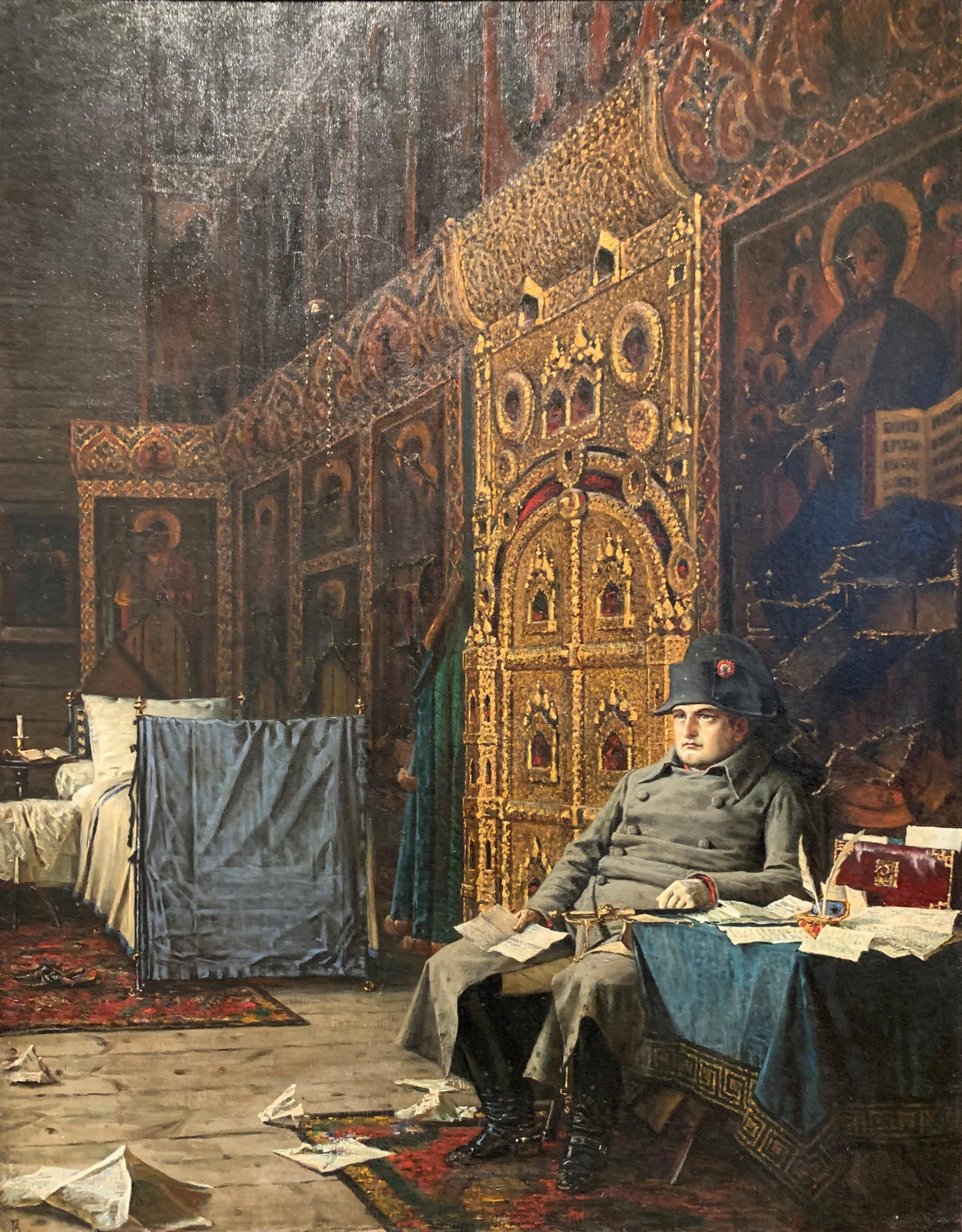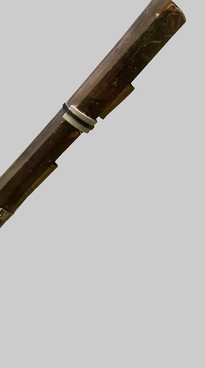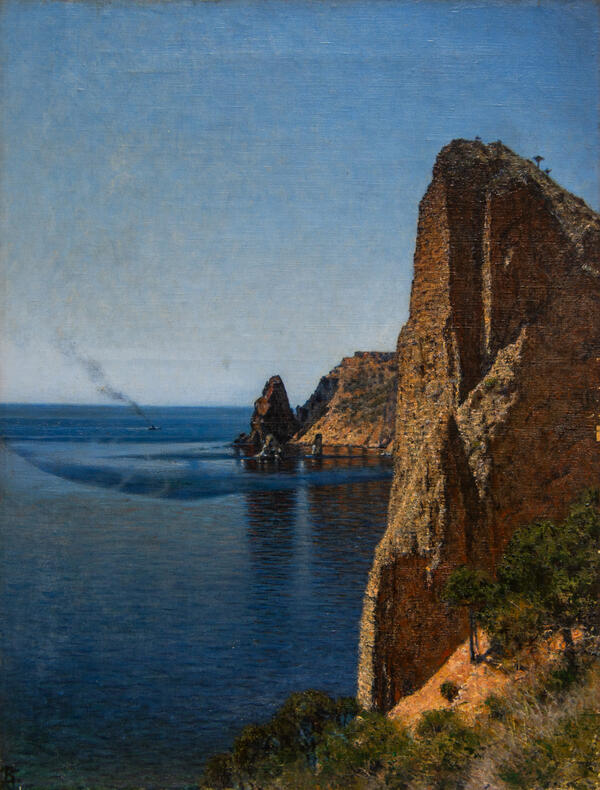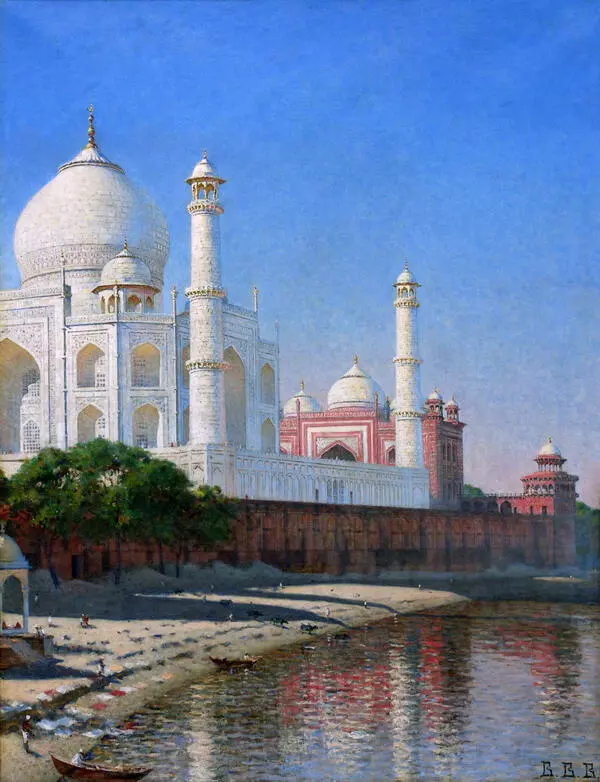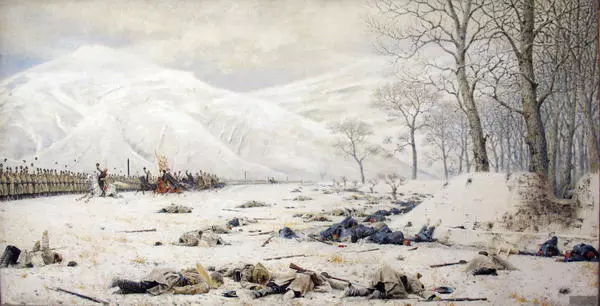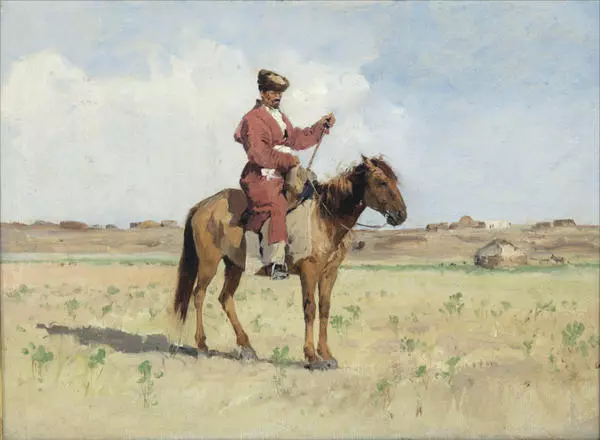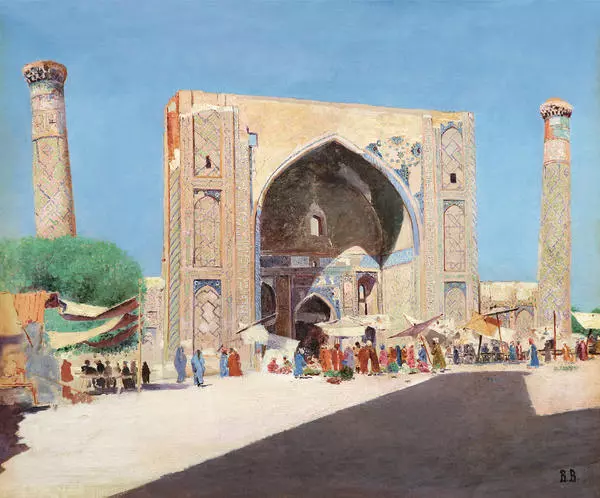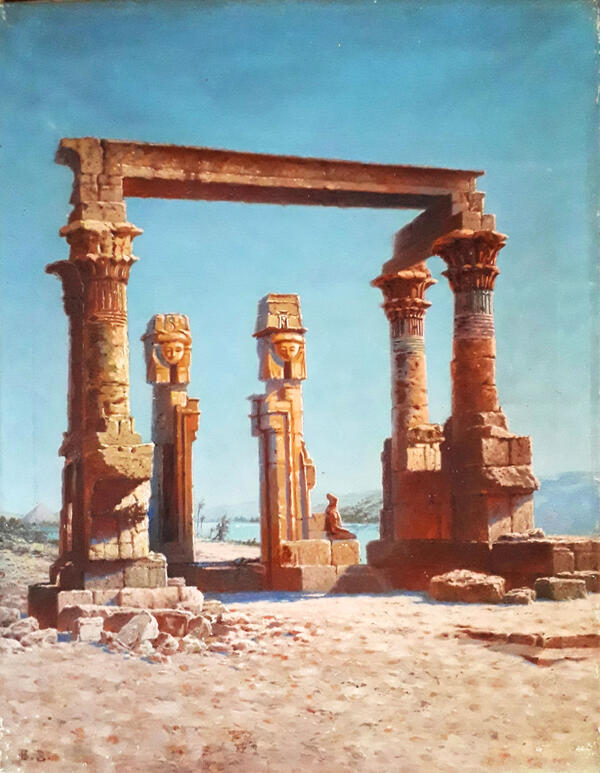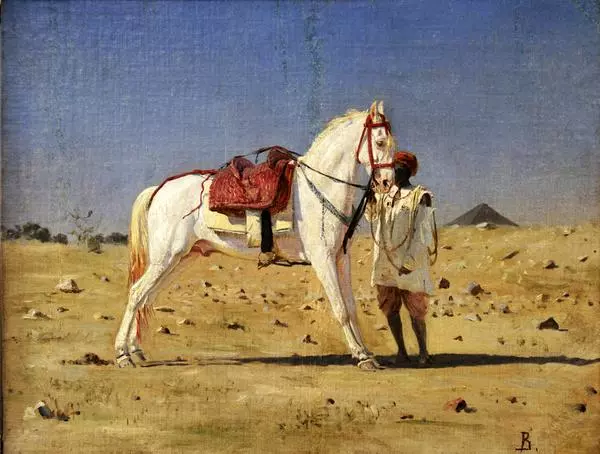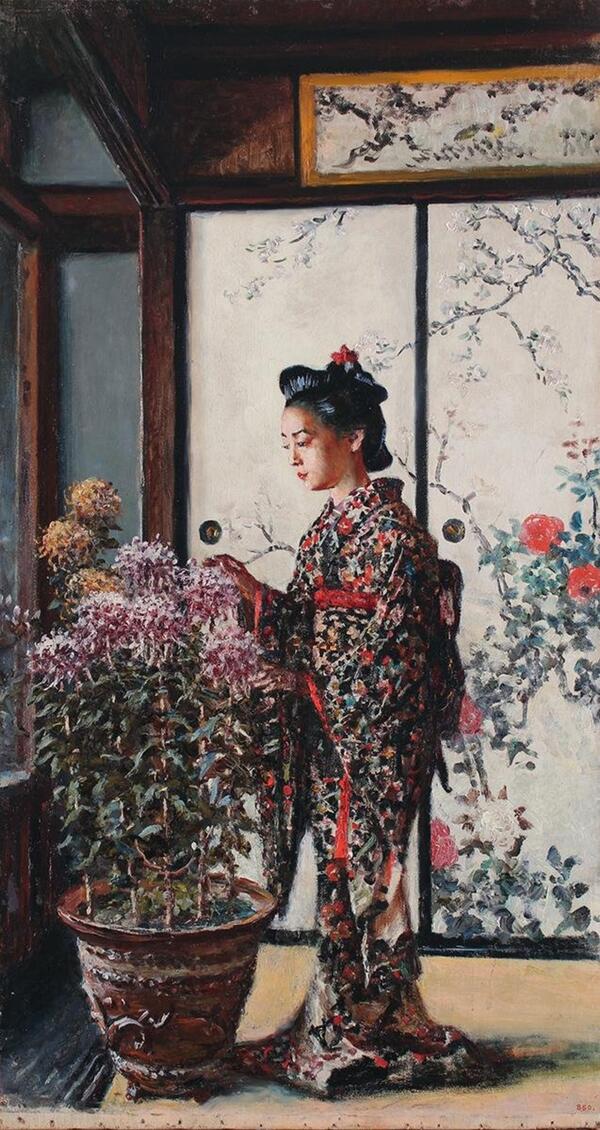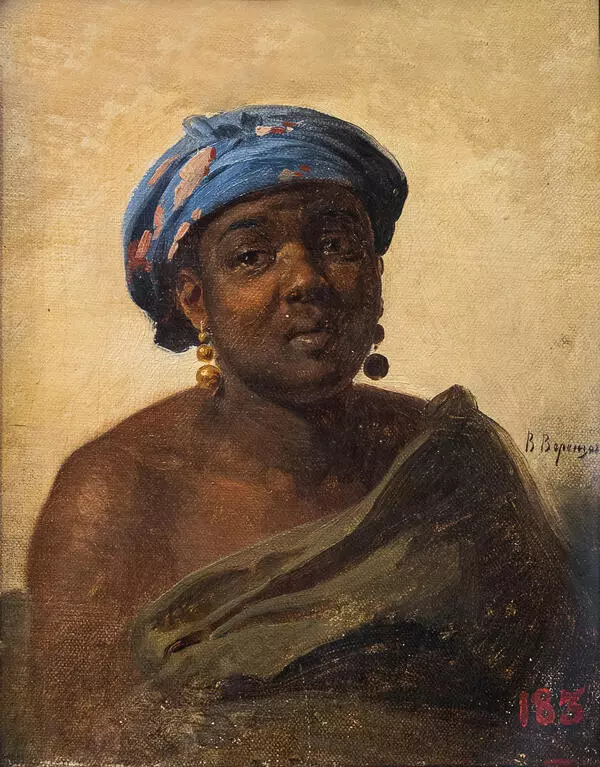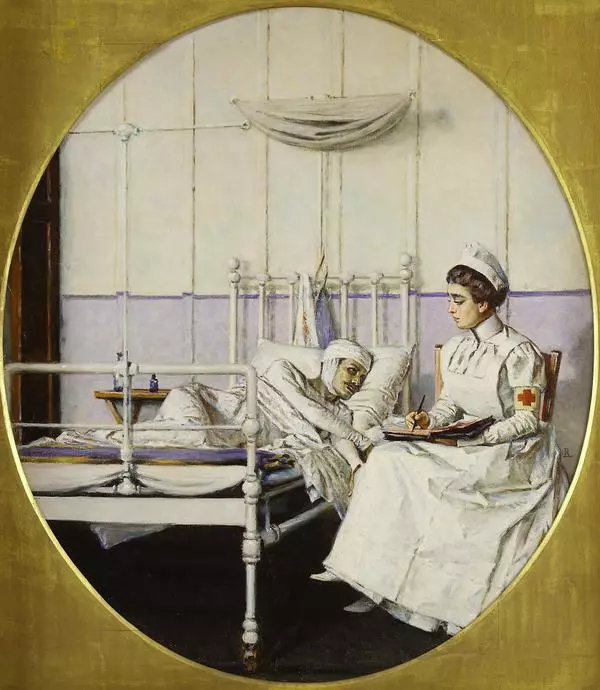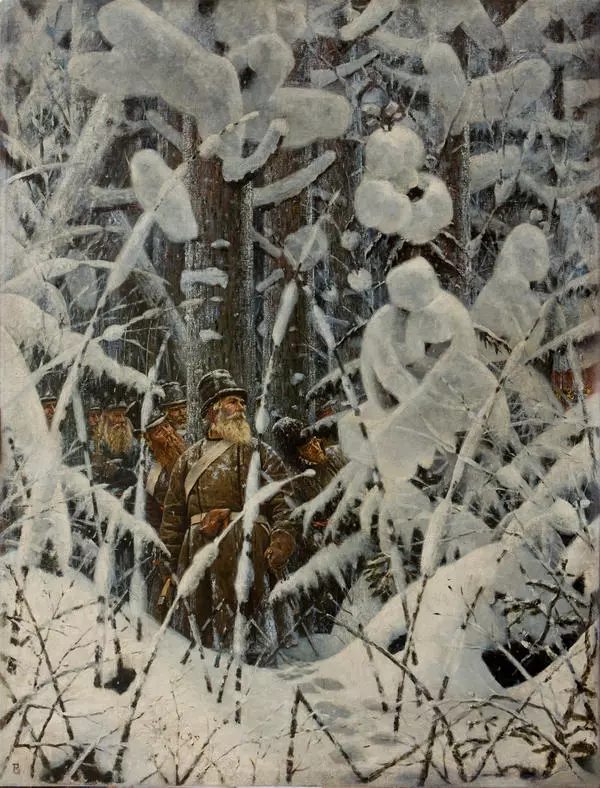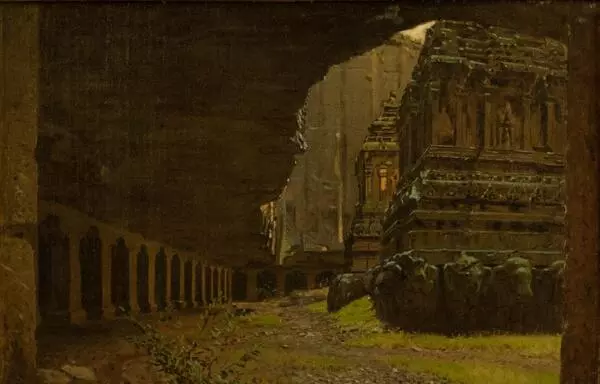Vasily Vereshchagin’s series 1812. Napoleon in Russia consists of 12 canvases. The exhibition presents eighteen of the twenty paintings, as well as the painting Napoleon’s Army Crossing the Berezina River from the collection of the State Historical Museum, which was never finished and was not included in the series. Two paintings of the series are not on display, because they are located abroad. These canvases are named The Return from the Petrovsky Palace and The Kremlin is on Fire.
Vasily Vasilyevich Vereshchagin started the series of paintings on the 1812 Patriotic War in 1887. The artist strove to depict this dramatic and moralizing stage of Russian history, and therefore chose it as the theme for a series of his paintings. He approached the artistic process very carefully.
First, the artist worked out a scenario plan, according to which he chose the plots of the future paintings. When collecting material for his work, Vasily Vereshchagin used a lot of memoirs from the era of the Napoleonic invasion. The artist studied a lot of literary sources, not only Russian, but also English and in French, in order to ‘revive’ the realities of that period. Many texts based on the recollections of eyewitnesses to the wartime refuted the myths of Napoleon and whipped away the aura of chivalry from the entire French army.
Vereshchagin’s canvases are a grandiose pictorial chronicle. The twenty paintings included in the series demonstrate the most important key events of the war: from the battle of Borodino to Napoleon’s flight from Russia. The French leader fled before his army began to retreat. This event, crossing the Berezina River, became the plot of Vasily Vereshchagin’s twenty-first picture. The artist worked on this canvas in 1902 to 1904, but did not manage to finish it, so the picture was not included in the series.
Due to the lack of narrative possibilities of painting, Vasily Vereshchagin compiled historical comments on his pictures. The artist published these comments in the form of booklets, as reference materials for exhibitions. They amalgamated all the pictures of the cycle into a single story. These comments further emphasize the fact that all canvases are united by a single plot and make up a series.
Vasily Vasilyevich Vereshchagin (1842-1904) was an artist and a writer, who received his utmost recognition as a battle painter. At the very beginning of the Russo-Japanese War, he immediately went to the front. Vasily Vereshchagin died March 31 (April 13), 1904 on the battleship Petropavlovsk, which was blown up by a mine during the defense of Port Arthur. Under the same circumstances, the famous Admiral Stepan Osipovich Makarov passed away.
Vasily Vereshchagin made many private notes. One of them says that the artist was always very fond of the sun and really wanted to always depict it in his paintings.
Vasily Vasilyevich Vereshchagin started the series of paintings on the 1812 Patriotic War in 1887. The artist strove to depict this dramatic and moralizing stage of Russian history, and therefore chose it as the theme for a series of his paintings. He approached the artistic process very carefully.
First, the artist worked out a scenario plan, according to which he chose the plots of the future paintings. When collecting material for his work, Vasily Vereshchagin used a lot of memoirs from the era of the Napoleonic invasion. The artist studied a lot of literary sources, not only Russian, but also English and in French, in order to ‘revive’ the realities of that period. Many texts based on the recollections of eyewitnesses to the wartime refuted the myths of Napoleon and whipped away the aura of chivalry from the entire French army.
Vereshchagin’s canvases are a grandiose pictorial chronicle. The twenty paintings included in the series demonstrate the most important key events of the war: from the battle of Borodino to Napoleon’s flight from Russia. The French leader fled before his army began to retreat. This event, crossing the Berezina River, became the plot of Vasily Vereshchagin’s twenty-first picture. The artist worked on this canvas in 1902 to 1904, but did not manage to finish it, so the picture was not included in the series.
Due to the lack of narrative possibilities of painting, Vasily Vereshchagin compiled historical comments on his pictures. The artist published these comments in the form of booklets, as reference materials for exhibitions. They amalgamated all the pictures of the cycle into a single story. These comments further emphasize the fact that all canvases are united by a single plot and make up a series.
Vasily Vasilyevich Vereshchagin (1842-1904) was an artist and a writer, who received his utmost recognition as a battle painter. At the very beginning of the Russo-Japanese War, he immediately went to the front. Vasily Vereshchagin died March 31 (April 13), 1904 on the battleship Petropavlovsk, which was blown up by a mine during the defense of Port Arthur. Under the same circumstances, the famous Admiral Stepan Osipovich Makarov passed away.
Vasily Vereshchagin made many private notes. One of them says that the artist was always very fond of the sun and really wanted to always depict it in his paintings.
